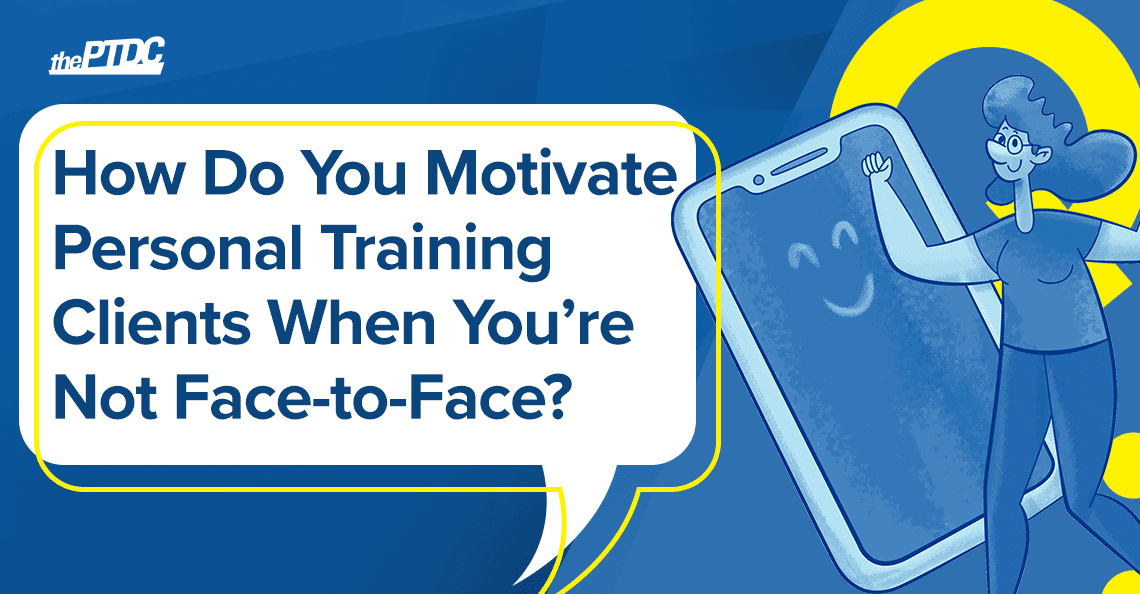 Clients who want to work with you online are generally going to be more motivated than in-person clients.
Clients who want to work with you online are generally going to be more motivated than in-person clients.
In every case an online client has found you vs. being matched with you at a gym.
It’s your job to keep your online personal training clients’ enthusiasm up.
The PTDC has worked with more than 50,000 online trainers in the decade since I started it, and we’ve found that there are three types of motivation that personal training clients respond to when you’re not face-to-face.
Three ways to motivate personal training clients when you’re not face-to-face
Chances are your client will respond to one of the following strategies, and only one.
Start a conversation with them, learn about their personality, and try to find out which carrot you need to dangle.
1. Use quantitative measures
Some people are geeks for metrics. These are the folks who wear Oura Rings and Fitbits, and get obsessed with tracking their steps and sleep habits.
They like to see concrete evidence of their progress, so show them how they’re improving in any way you can.
Have them:
- wear a heart rate monitor for their cardio
- keep a workout journal for their strength sessions
- use apps that chart their journey
Simple Workout Log, available for Android and coming soon to iOS, lets you record workouts just like an old-school logbook. It can graph weight lifted on exercises over time, so your client can see exactly how much stronger they’ve become.
Happy Scale (Apple) and Libra (Android) can do the same for bodyweight. You enter your weight daily, and the app lets you see how it’s changed and where it’s headed.
When the client sees how far they’ve already come, they’re more inclined to want to go further—with you at the helm of the ship.
2. Celebrate every step
This one works like a charm for me, personally. And virtually everyone you see posting selfies in the gym on Instagram is in the same boat.
These people need the gratification (and maybe validation) of knowing that other people see them working hard and making progress.
So they make a show of nearly every step they take toward their goal, no matter how seemingly insignificant.
Every time I finish a workout, I post an Instagram story of me in the gym and a caption that says something like “workout done.” To me, it feels like a reward for showing up and putting in the work.
If your client doesn’t want to use social media for that purpose, have them text you “done” every time they finish a workout.
You don’t have to respond with anything more than a thumbs-up emoji—just acknowledge what they’ve done.
(Research shows that positive feedback to personal training clients builds self-confidence and perceptions of mastery over a task. Who wouldn’t keep training to feel like that?)
You can have them do the same with the healthy meals they eat.
3. Set tangible goals
Setting a goal to lose 20 pounds doesn’t do much to keep most people on track.
That outcome is too abstract to wrap your head around, because what does 20 pounds really mean in someone’s life? It’s just a number.
It also doesn’t provoke an emotional response—a reason that gets you excited to put your heart and soul into your training.
A good example you commonly see is that when a client would say that they wanted to lose a certain number of pounds or so many inches off their thighs, you’d tell them to go out and buy a pair of pants that’s the size they wanted to fit in someday. Even better if it’s a size they used to wear, because now they know for sure that it’s possible.
With pants, they have a clear idea of what losing pounds and inches will look like on their body, and how satisfying it could feel.
If the client is into gaining size, having them focus on numbers can actually be a good motivator.
They could set a goal to hit 300 pounds on the bench press, or squat twice their bodyweight, but I’d still make sure that they attach those numbers to something that’s real and present.
They could go out and buy a sleeveless shirt they want to fill out, or one of those novelty shirts that says “300-pound bench press club.”
It doesn’t matter how long it takes for the person to reach the goal, because the timeline can be affected by any number of variables that are out of their control, and yours. So be careful not to attach any hard deadlines that, if not met, will make the person feel like they failed.
The point is just to have something they can see—and even reach out and touch—on a daily basis that keeps their goal conceivable, and top of mind.
As long as the goal is tangible and feels meaningful, it can ultimately be attainable.
Learn more: Get answers to more online trainer questions.











